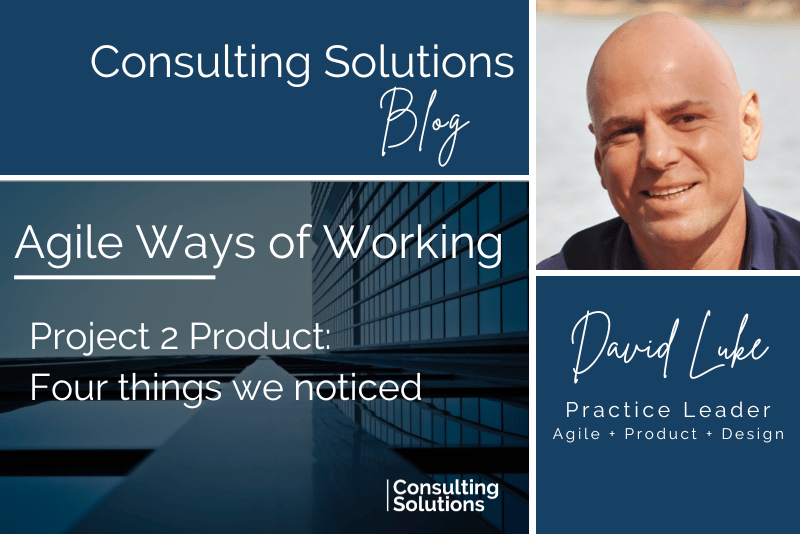Disrupt. Pain. Grow. Repeat. This is the widely experienced pattern of organizations that are looking to become more efficient and customer-centric. Today I’m sharing with you a few things I noticed as one of our clients grew into a more efficient, product-modeled organization. Our team tried many things—scrum with PMO, design-based studios, scaled agile—but none seemed to completely resonate with the organization and its people. Ultimately, we took the best of each of these processes, added a product-centric model that focused on the customer experience, and BAM! We were off and running.
Here are four things we noticed about the client’s new organization:
PLANNING TIME WAS REDUCED EXPONENTIALLY. Before we evolved to a product model, our typical quarterly planning (QPP/PI) took about 2.5 days and required lots of pre-conversations for alignment and dependency management. Once we moved to a product model, our planning was reduced to a morning session, expectations and roadmaps were actively managed, and our execs and teams stayed in lockstep with our customers throughout the quarter.
OUR WAY OF WORKING BECAME SMOOTHER AND MORE EFFICIENT. By aligning our organization to products, all of our teams knew how and where their work aligned to the big picture. As a result, transparency and communication increased fivefold and our agile became, wait for it… legendary. Gone were the days of injected work—if a feature needed to be changed, teams had the agency and support to change it without fear.
FUNDING COMPLEXITY WAS REDUCED SIGNIFICANTLY. Most organizations dread the CapEx funding and budgeting process, us included. But once we went to a product model, funding allocation was much easier to understand, outcomes were directly pointed at our strategy, and we gained much-needed customer flexibility. Gone were the 12 cycles of review; instead, products aligned to funding which aligned to our market promises.
OUR PEOPLE WERE HAPPIER AND MORE ENGAGED. We had a noticeable shift in culture, meaning that our folks had agency to provide their insights. In particular, agilists and product people now had a defined career path that aligned to the skills and roles needed to deliver our products. As part of this, people began showing empathy toward one another (plus our customers) and our teams weren’t overworked in order to meet an ever-moving target. We also had an unexpected outcome: Due to our culture and work environment, we were able to better attract and retain top talent.
Once we aligned to our product model, we were able to put efficient structures and strategies in place across our digital footprint:
- We spun up an ePMO to house our product council and help align our corporate strategy to our OKRs.
- We implemented flexible PMOs for each product group to help organize the work and ensure that our capacity was actively managed.
- Due to our product and customer insights, we were able to work with an offshore provider to create a burstable capacity that aligned to market needs.
The key to all of this is to experiment with new things and don’t be afraid to fail. We had the support of leadership and the efforts of some amazing people. Try this with one of your teams and one of your products. It’s all about the journey and outcomes.
